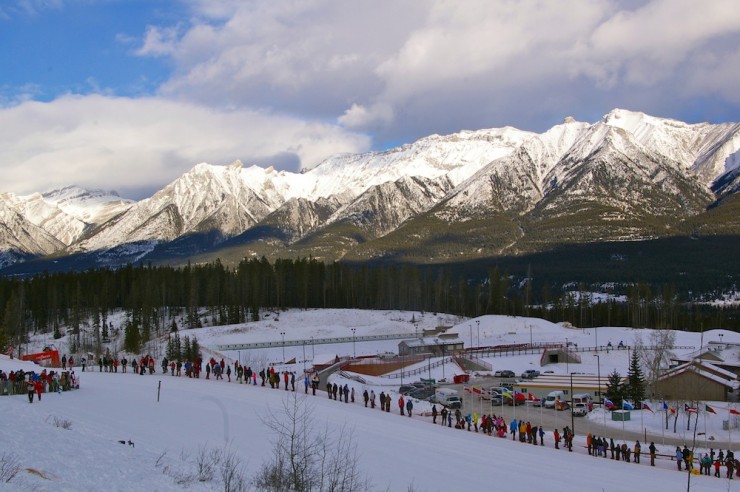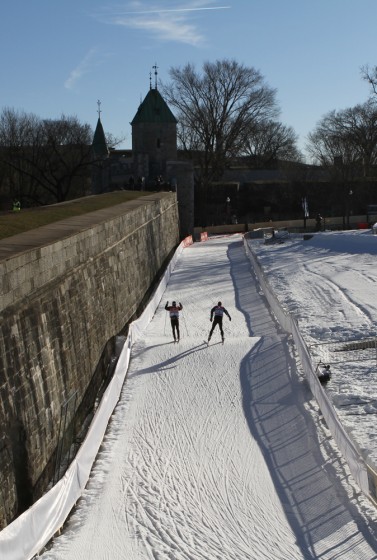
Canada will be hosting a late-season World Cup tour in 2016. An exciting development for North-American skiing, the proposal cleared yet another hurdle at the International Ski Federation (FIS) 2014 Congress last week in Barcelona, Spain, after receiving a set program.
The Tour du Canada will feature eight stages starting March 1, 2016 and continuing until March 12.
Commencing with a city sprint in downtown Gatineau, Quebec, the tour will then travel to Montreal and Quebec City. Competitors will then either take a train or chartered flight to Alberta, where they will compete in the final four stages, which will take place at the Canmore Nordic Centre and Lake Louise.
“It’s an ambitious plan,” said Chris Grover, chairman of the FIS Committee for World and Continental Cups (as well as the U.S. Ski Team head coach) on the phone last Friday. “They are trying to create something special, which was the request of FIS – to find something special in a non-World Championship and non-Olympic year to draw viewership back to cross country in the second half of the season. The Canadians have really stepped up to the plate.”

The newly slated Tour du Canada was previously scheduled for February, but was moved to the end of the season to accommodate athletes’ travel schedules and maximize participation in the tour.
“It’s going to challenge athletes and it’s going to challenge teams, and that’s why ideally we would need to have it at the end of the season,” Grover said. “At the best we get the absolute greatest participation and I think it’d be an incredible way to finish the season.”
The move to the end of the season does, however, pose a conflict in regards to scheduling. With the placement of the Canadian tour in March, traditional spring venues such as Lahti, Drammen, Oslo, Falun, and Stockholm will need to be rescheduled.
While it may be easy for cross country to make the calendar change in 2016, coordinating with the remaining nordic disciplines is where the true challenge lies.
“It’s not as easy as saying, ‘cross-country would like to do this’,” Grover explained. “It really requires coordination between all of the nordic disciplines. The changes would be really positive for our schedule going forward, are not necessarily easy for the other disciplines to make, especially when they are traditionally blocked out those Scandinavian venues for March.”
Despite the disruption to the traditional calendar, Grover said that he didn’t witness any opposition to the proposal during his time at the congress. In fact, he said the tour’s move to March had the possibility to ensure that other World Cups are also highly attended. If the tour had been held in February, athletes returning to Europe from may have skipped some World Cups.
While the changes to the rest of the schedule are still being finalized, the reorganization will aid in the creation of the 2016/2017 season because the international-racing circuit needs to visit South Korea for a pre-Olympic World Cup.
“It’s very hard to put something like a stop in South Korea into a schedule that is primarily focused on races in Europe, especially on a year that includes the World Championships,” he added. “So ideally something like that would go at the end of the year, but then we run into the same scheduling conflicts.”
The Tour du Canada, in addition to the 2015/2016 and 2016/2017 World Cup calendars, will be revisited by FIS in the coming months to finalize logistics.
Lander Karath
Lander Karath is FasterSkier's Associate Editor from Bozeman, Montana and a Bridger Ski Foundation alumnus. Between his studies at Middlebury College in Vermont, he is an outdoor enthusiast and a political junkie.



